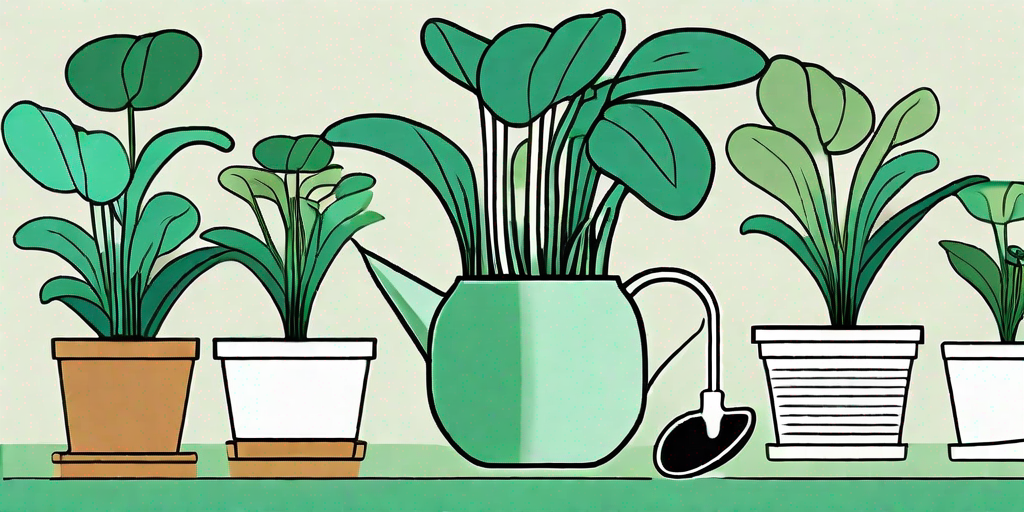
Pitcher plants, with their carnivorous charm and exotic allure, are a fascinating addition to any plant collection. However, like a diva demanding the perfect dressing room, these plants require a bit of extra care and attention. One of the most crucial aspects of pitcher plant care is repotting. Fear not, dear plant parent, for we have compiled a comprehensive guide to help you navigate this process with ease and humor.
Understanding Your Pitcher Plant's Needs
Before we dive into the nitty-gritty of repotting, it's essential to understand your pitcher plant's needs. These plants are not your typical green companions. They're carnivorous, meaning they have a taste for insects. They're the Audrey Hepburns of the plant world, elegant yet deadly.
Unlike most plants, pitcher plants thrive in nutrient-poor soil. This is because they get most of their nutrients from insects. So, if you've been spoiling your pitcher plant with rich soil, stop right there! You're not doing it any favors.
Choosing the Right Soil
When it comes to soil, pitcher plants are like the Goldilocks of the plant world. They don't want soil that's too rich, nor do they want soil that's too poor. They want it just right. And by just right, we mean a mix of sphagnum peat moss and perlite. This combination provides the perfect balance of drainage and water retention.
Remember, no added fertilizers or nutrients! Your pitcher plant gets all the nutrients it needs from its insect diet. Adding extra nutrients to the soil can harm your plant.
Choosing the Right Pot
Choosing the right pot for your pitcher plant is like choosing the right outfit for a night out. It needs to be practical, but it also needs to look good. Pitcher plants prefer pots that are deep enough to accommodate their long root system. A pot that's too shallow can restrict root growth and stunt your plant's development.
As for the material, plastic or ceramic pots are your best bet. These materials are excellent at retaining moisture, which is crucial for your pitcher plant's survival. Just make sure the pot has drainage holes to prevent waterlogging.
Repotting Your Pitcher Plant: A Step-by-Step Guide
Now that we've covered the basics, it's time to roll up your sleeves and get your hands dirty. Here's a step-by-step guide to repotting your pitcher plant.
-
First, prepare your potting mix. Combine equal parts sphagnum peat moss and perlite. Make sure the mix is damp, but not soaking wet.
-
Next, gently remove your pitcher plant from its current pot. Be careful not to damage the roots.
-
Place a layer of your potting mix at the bottom of the new pot. Then, place your pitcher plant in the pot and gently fill in around the roots with more potting mix.
-
Water your newly potted pitcher plant thoroughly. Then, place it in a location with bright, indirect light.
And voila! You've successfully repotted your pitcher plant. Give yourself a pat on the back, you plant whisperer, you.
Common Repotting Mistakes to Avoid
Repotting your pitcher plant can be a bit tricky, and it's easy to make mistakes. Here are a few common pitfalls to avoid.
-
Using the wrong soil: As we've mentioned, pitcher plants need a specific type of soil. Using regular potting soil can harm your plant.
-
Overwatering: Pitcher plants like moisture, but too much water can lead to root rot. Make sure your pot has good drainage to prevent waterlogging.
-
Not repotting often enough: Pitcher plants should be repotted every 1-2 years to ensure they have fresh soil and enough room to grow.
Frequently Asked Questions
How often should I repot my pitcher plant?
Pitcher plants should be repotted every 1-2 years. However, if your plant seems unhappy and you've ruled out other issues, it might be time for a fresh pot and soil.
Can I use regular potting soil for my pitcher plant?
No, regular potting soil is too rich for pitcher plants. They prefer a mix of sphagnum peat moss and perlite. Remember, no added nutrients or fertilizers!
Why are the leaves on my pitcher plant turning yellow?
Yellow leaves can be a sign of overwatering. Make sure your pot has good drainage and that you're not keeping the soil too wet. If the problem persists, it might be time to repot your plant.
Repotting your pitcher plant can be a fun and rewarding experience. With a bit of knowledge and a dash of humor, you'll have your plant thriving in no time. Remember, the key to a happy pitcher plant is understanding its unique needs and providing the right care. Now, go forth and repot!















